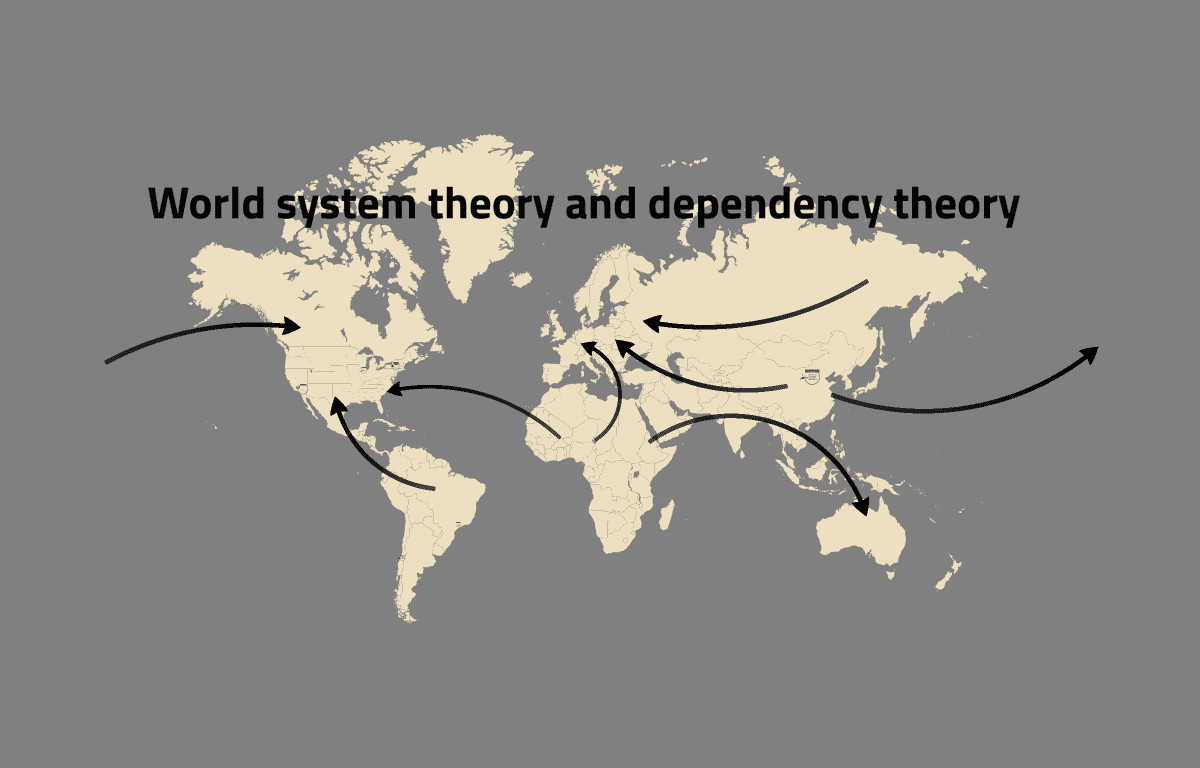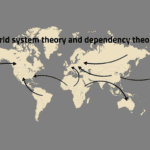
The World Systems Theory – Understanding The Present From History – A Real Informed Finance Perspective
The World Systems Theory is perhaps the most honestly insidious theory that explains present day economies and geopolitics. Among its main postulations is that there exists global inequality among the nations of the world – a system governed by economics – in which some countries benefit by exploiting others. The theory thus has it that the advent of global capitalism is the only logical factor that can explain the history of the modern world. This capitalism is skewed to favor some countries and exploit others. It offers some logical approaches to explain the way the modern world is currently situated in the context of countries and their position in global affairs.
This analytical and argumentative article argues for the constructs of the World Systems Theory, pointing out the various ways in which it is backed by historical evidence. Most of the historical evidence presented is from the book The Human Record: Sources of Global History, Volume II: Since 1500.
Introduction
The World Systems Theory evolved from the Dependency Theory. The Dependency Theory held that the world could be viewed on a global context to comprise of ‘periphery’ and ‘core’ countries. Periphery countries were the poor and undeveloped states, while core countries were the wealthy more developed states. The theory held that the core countries enriched and continue to prosper at the expense of the periphery countries by way of colonization and other policies. The World Systems Theory fronted by Immanuel Wallerstein steps in as an advancement by introducing yet another set of countries between periphery and core countries termed as the ‘semi-periphery’. This semi-periphery is comprised of developing countries. The theory has it that there exists a capitalism system where periphery countries are exploited by core countries with semi-periphery countries bridging the capital and other gaps between the two.
Industrialization and Capitalism Leading to Imperialism
It is important to note that the World Systems Theory views the advancement of economies from the periphery to the core to be guided by constructs of industrialization and capitalism leading to imperialism. For example, citing Adam Smith’s work of his inquiry into The Wealth of Nations published in 1766, mercantilism and advancement in technologies by way of innovation and inventions are viewed to be the most potent ways by which the major constructs of capitalism evolve. He states that in environments of free markets, nations begin to develop self-interests in the sectors in which they are best in thus they allocate more resources to these sectors. With the advent of time, these sectors in these countries develop by way of industrialization and other innovations that improve efficiency.
It is such development that led to the independence of the United States of America. The peoples of the thirteen colonies were seeking to be free to practice and go about their normal businesses without the interference of their colonizers – The British. The British, then a developed country (a core country) had asserted capitalistic and imperialist forces on a country that had grown from periphery to semi-periphery by way of industrialization and competitive advantage. The US colonies thus declared independence to absolve themselves from being the subjects of the British crown in 1776 to stop the British from exploiting them. The British exploiting the US colonies for their own gains then is a classic example of how the World Systems Theory explains the advance of global capitalism to explain the history of the modern world today.
Imperialism Leading to Mercantilism
Just as the World Systems Theory proposes, when nations get to a point when they have more competitive advantage in a certain sector than other countries, imperialism sets in and they start influencing the prices in the free market. Guided by the mercantilist approaches of trade, the countries seek out more efficiencies and means to enhance their capabilities and competitive advantages over other countries. Selfish interests kick in and these countries exploit others in trade and other avenues. It is from this phenomenon that the World Systems Theory is seen to hold water in giving an analogy of world history.
Mercantilism and Competitive Advantages
Adam Smith’s construct and the issue of competitive advantages improving to reduce the use of labor by mechanization can be evidenced in the history of the advancement of the West in the ages of imperialism and industrialization. History has it that in 1815 Europe’s population was about 200 million with about 25 million of Europeans living outside Europe; figures that increased immensely to about 450 million Europeans with 150 million living outside Europe. Analysis of this statistic reveals that in 1815 most Europeans and Americans lived in rural settings and tilled the land; but with the advent of industrialization by 1914 most Europeans and Americans were living in cities and other urban settings and working in offices. Of concern in these statistics is industrialization and imperialism in world history.
Global Capitalism and Colonialism
The World System Theory has it that global capitalism is the key factor that is rife in explaining the history of the modern world. Such capitalism evolves from, among other factors, industrialization which has a positive relation to capitalism. Judging by the development path that was taken by the West, it was in the ages described above that was the age of Western dominance where the West exercised imperialism to the rest of the world. This aspect led to colonialism which shifted the roles of government from mere protection of the state and provision of certain key social services towards mercantilist approaches to actively develop economies. Just as the World System Theory posits, in the period of Western Dominance the periphery countries comprising of the undeveloped were exploited by the core countries which were the developed West. Such exploitation was by way of colonialism which forced the undeveloped to remit taxes, and the forcible exploitation of the poor undeveloped countries minerals in the colonies.
Capitalism versus Communism
The most formidable construct against capitalism that was rife in the age of Western dominance between 1800-1914 was communism. Karl Marx and Friedrich Engels reckon that it first evolved as an abject trajectory to edge out capitalism amongst some developing countries in Asia against the West’s colonialization and imperialism. Russia, then a developing country which can be termed as a semi-periphery according to the World System Theory, was the biggest advocate for global communism against capitalism. Strong Advocacy against capitalism by communism led to the Cold War, in essence the Truman Doctrine because it was strongly vocalized by President Harry S. Truman (in office 1945-1953).
Around the period of the Truman Doctrine and the Cold War, the world was skewed across either capitalism or communism around the Superpowers of the day – the West versus Russia and its allies. This caused the global divide in the modern world today as can be explained by the World Systems Theory. For example, although not entirely skewed towards communism as advanced by Russia, India adopted some of the constructs of communism and stated that they supported nonaggression and noninterference in the affairs of other countries. India’s first prime minister after independence – Nehru, echoed these sentiments to assert the external pressure that India was facing even after independence. The core countries were still indulging in the domestic affairs of India.
Conclusion
When discussing the World Systems Theory, the semi-periphery developing countries could be viewed as the Bourgeoisie; who comprise the middle class in global geopolitics, while the periphery countries could be viewed as the proletariat; who eke by laboring without engaging in profit-making ventures. The blame of the proletariats’ plight can be placed squarely upon the actions of the core countries as these dictate the terms by which the proletariats live by owing to their capitalism-led imperialistic policies. The privileged position that the core countries hold over the periphery and semi-periphery states in global geopolitics in the modern world can be explained historically from the advent of industrialization leading to capitalism and imperialism as discussed in the article. This is the main construct of the World Systems Theory.
Key Takeaway From The World Systems Theory
Inasmuch as we would love to steer clear of hegemony in matters development at a macroeconomic level, such an ideal may only apply in hypothetical levels. Indeed the colonial and Cold War eras are long gone, but we are faced with almost similar phenomena today at a macroeconomical level. The West and East have never been so ripe for mercantilism as they are now. Those who do not learn from history are doomed to repeat it. Both we and our leaders should wake up and smell the coffee.







